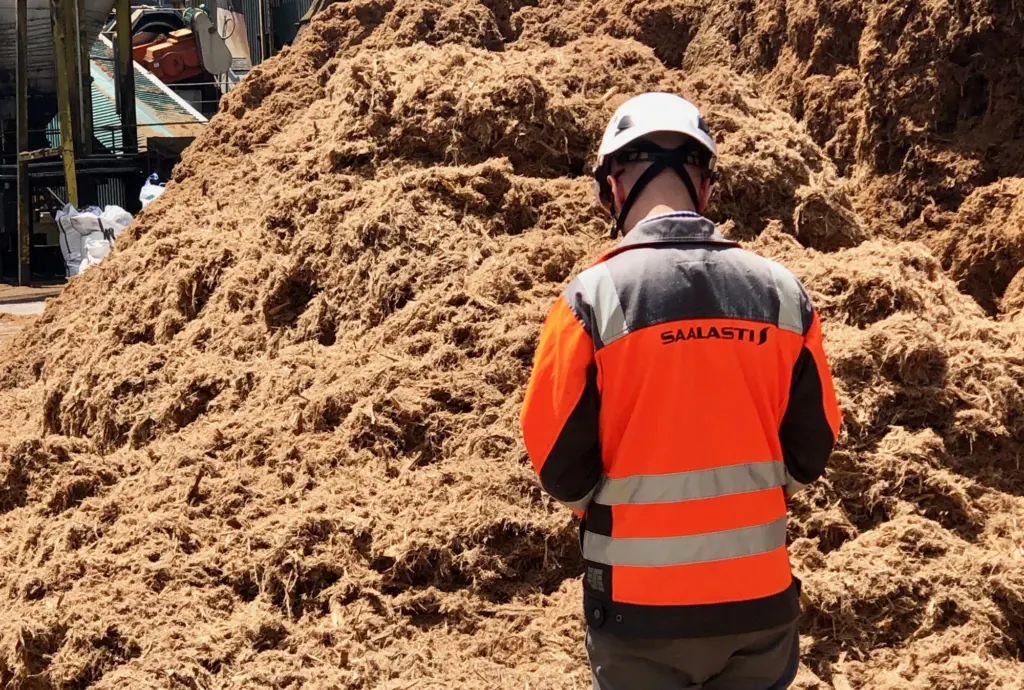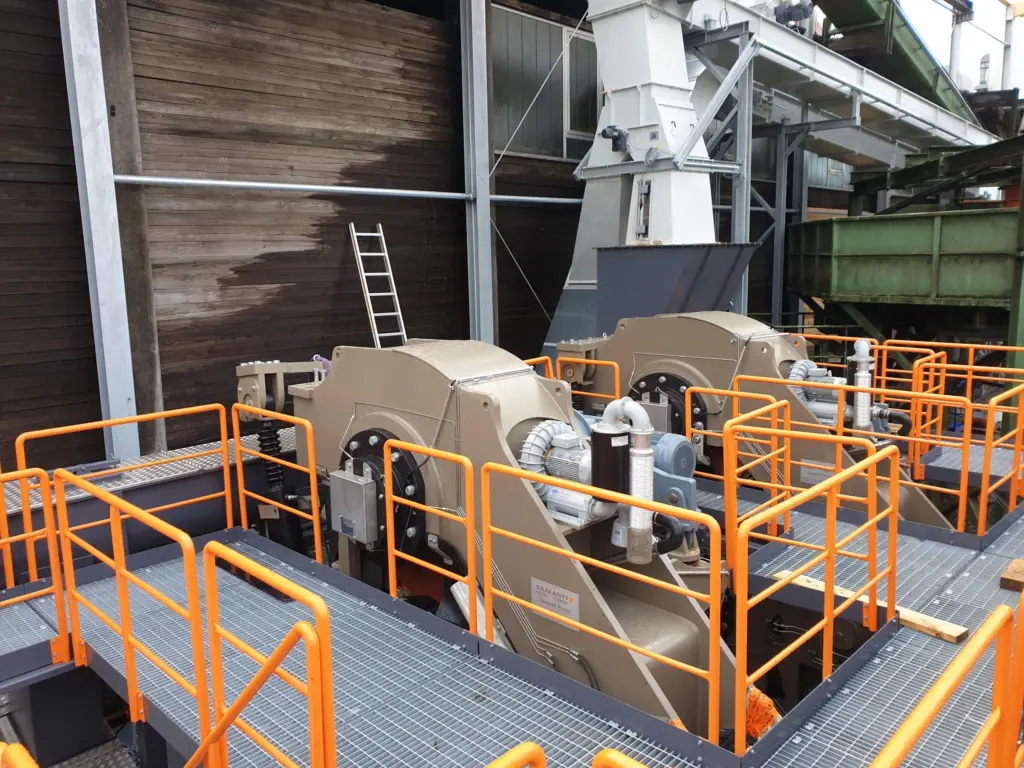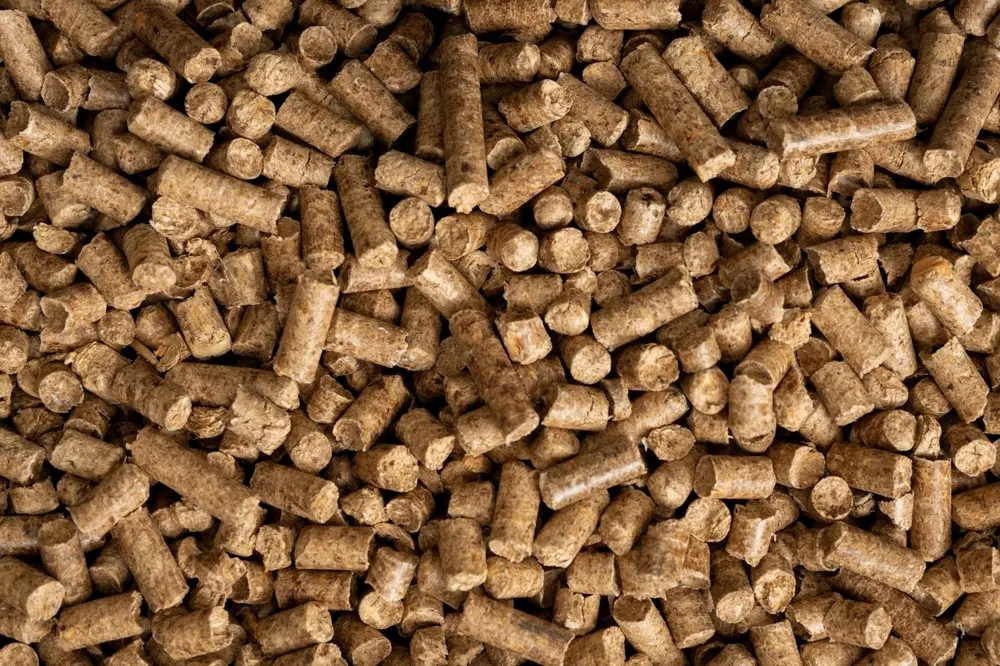News
Mobile crusher or stationary crusher for biomass?
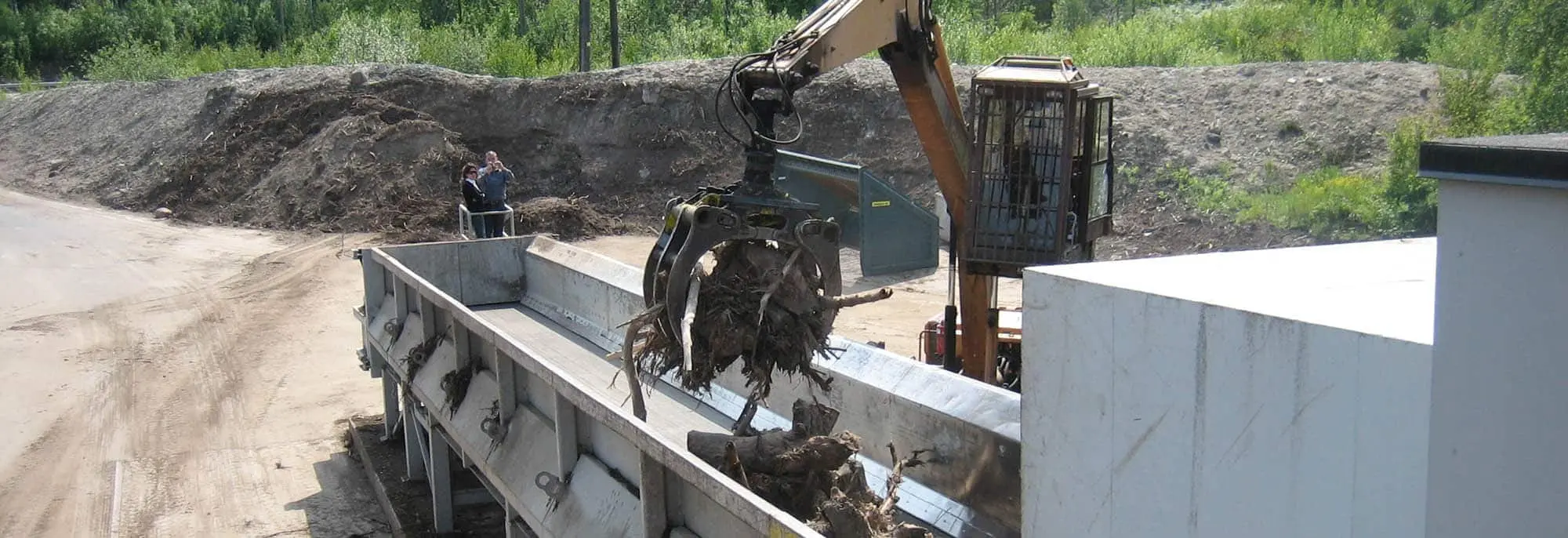
Why prefer an on-site crusher?
Are you considering ways to handle and crush biomass with maximal efficiency? Then, you probably want to choose between a mobile crusher and a stationary crusher.
In addition to the machine’s features, it is essential to consider cost-effectiveness, environmental efficiency, and capacity. After all, you want to make an investment that offers long-term benefits and reliable operations.
See the comparison of a mobile crusher vs a stationary crusher and why we say an on-site crusher (aka stationary) is the better choice.
Mobile crusher or stationary crusher for biomass?
A mobile crusher and an on-site crusher often perform similar tasks. However, only one can dramatically reduce the use of fossil fuels, be more efficient in the long run, and handle significantly larger volumes of biomass.
The benefits of stationary crusher
Minimize emissions from transportation
Of course, the core feature of a mobile crusher is mobility. However, this also presents significant drawbacks: transporting a large machine requires a substantial amount of fuel, often fossil-based.
A mobile crusher needs to be transported to various biomass sites, requiring fuel and generating emissions. Using an on-site stationary crusher eliminates these transportation requirements and associated emissions.
An on-site stationary crusher can significantly lower the environmental impact of a mobile crusher by using a centralized facility and eliminating fuel-intensive transportation.
You can also minimize land disturbance by using an on-site crusher. Mobile crushers may need to operate in sensitive areas, such as forests or agricultural lands, which can lead to land disturbance compared to a single, centralized stationary facility.
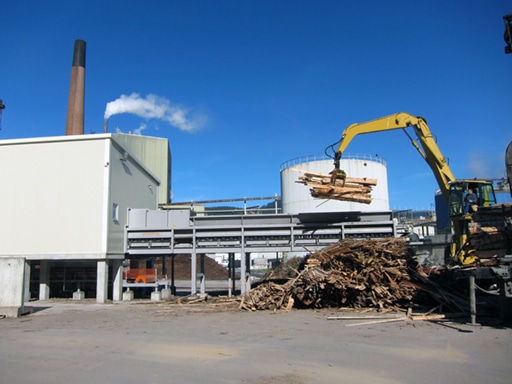
Maximal capacity with robust construction
When it comes to capacity, on-site crushers can achieve significantly higher figures than mobile crushers. This is partly because a stationary crusher can be built more robustly and larger. Logistical requirements also limit the capacity of a mobile crusher.
The capacity of an on-site crusher can be adjusted and increased as per your requirements. Our crushers have the largest capacities in the world. For example, the capacity of the Saalasti Crush H crusher is selectable from 150 to 600 Im / h, depending on the material you use (P63).
“The capacity of the horizontal chipper is in a class of its own compared to mobile chippers. Especially in the winter season, we traditionally needed a lot of mobile chippers. Mobile chippers needed many trucks, which also consumed a lot of fossil fuels”
Lauri Heilala, Oulun Energia.
Improve the material flow with a stationary crusher
There are several reasons why stationary crushers can improve material handling compared to mobile crushers.
- By processing the biomass on-site, loose materials are not transported over long distances, which reduces transportation costs, emissions, and the risk of material degradation during transit.
- On-site crushing enables the processed biomass to be introduced more efficiently into downstream equipment, such as boilers. The crushing step allows the material to flow more smoothly, preventing potential bottlenecks and increasing the system’s overall throughput capacity.
- On-site crushing allows for better integration with other biomass processing steps, such as drying, screening, or pelletizing.
- Downstream operations can process the material more consistently, optimizing combustion or conversion processes.
- Stationary crushers can also process various biomass materials, such as forestry residues, agricultural waste, and even mixed materials.
- Stationary crusher also offers better potential for waste heat recovery.
Success story: the Oulun Energia bioenergy plant chose a solid crusher to reduce its use of fossil energy
The Finnish power company Oulun Energia selected a stationary crusher unit to enhance productivity at its bioenergy plant. This facility handles various materials such as forest industry by-products, chipped wood for energy production, wood waste, or recycled wood. The aim is to produce electricity and district heating and to replace fossil fuels.
The company saw many reasons to choose an on-site crusher instead of a mobile crusher. Capacity could be increased, seasonal fluctuations minimized, and, above all, fossil fuel use could be reduced. The on-site crusher does not require diesel but runs on electricity.
“The horizontal chipper is more cost-effective and energy-efficient than a mobile chipper. The payback period is reasonable, considering its high capacity and energy usage.”
Lauri Heilala, Oulun Energia
Mobile crusher vs stationary crusher: Why prefer stationary
- A stationary crusher offers higher capacity and a more robust construction.
- An on-site crusher has lower maintenance and operating costs in the long term (thanks for the full steel rotor and optimized knife shape and material for different biomasses).
- A stationary crusher can be more energy efficient by running it with electricity.
- With an on-site crusher, you can reduce the use of fossil fuels, as the machine does not need fuel such as diesel.
- Stationary crusher minimises seasonal variations in production.
>> Download a Crusher’s buyers guide here.
Saalasti stationary crushers
We at Saalasti offer robust machines that are made to last for decades. With updates, the machines can handle different kinds of biomass materials and perform year after year with high efficiency.
The Saalasti Crush Horizontal is a high-capacity horizontal biomass crusher designed for on-site processing of all types of wood-based biomass, including impure materials.
- Features a robust construction and a Multitool ™ rotor that can handle various feedstocks, such as forest industry byproducts, logging residues, energy, and recycled wood.
- The Multitool ™ rotor makes utilizing a wide range of materials possible.
- The capacity is selectable from 150 to 600 I-m3 / h (P63), and the width of the crusher system can be up to 2.4 meters.
- Suitable for power plants, biomass terminals, and other facilities requiring high-throughput biomass processing.
Read more: Biomass Crusher Horizontal
Saalasti Crush Vertical
The Saalasti Crush V is the flagship model in Saalasti’s line of biomass crushers and has emerged as the preferred choice for numerous forestry operations.
Thanks to its robust and compact design, it has exceptional performance and reliability, making it the largest and most capable chipper in its class.
- Features a versatile rotor system that converts it between a crusher and a chipper. The rotor blades can be swapped out for crushing or chipping knives, depending on the biomass material that needs to be processed.
- Particle size P32–P100.
- Capacity 30–400 loose m3 per hour as needed. Depending on the material, the Saalasti Crush V’s capacity can be selected between 30 and 400 Loose m3 per hour (P63).
The flexible design enables the same machine to serve two different purposes simply by changing the blade type. Consequently, the Crush V can function as a wood crusher or a biomass chipper as required, making it a highly adaptable solution.
See all information: Biomass Crusher, Vertical
>> Learn more and get your free copy of Crusher’s buyers guide here.
Do you want to hear more about on-site crushers?
Contact us to find out how we can help your company!
